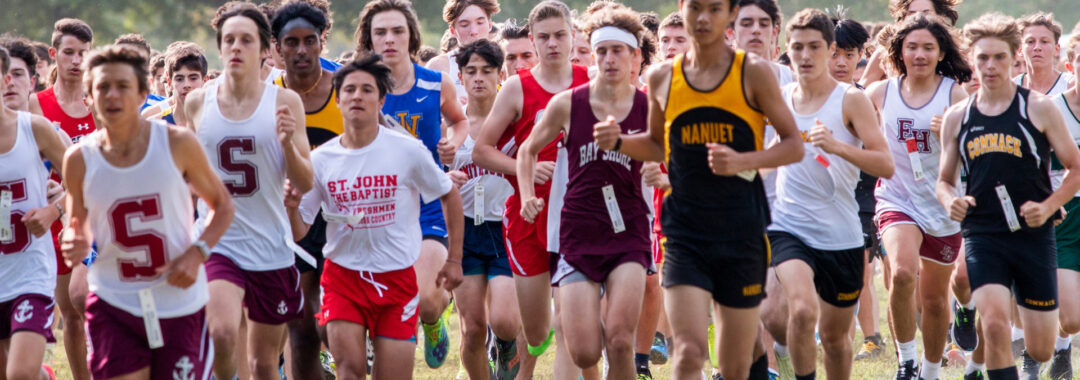The Role of Athletic Trainers, Athletic Directors, and Coaches Away from the Building
In youth sports, winning is a big thing. But we all know it’s not the most important thing. Young athletes learn leadership, decision-making skills, goal setting, and more. They even learn how to lose and how to get back up and try again.
Yet, none of that can happen if our young athletes aren’t kept safe. Whether in community sports, high school programs, college-level athletics, or even at the local gym, safety is paramount.
Athletic trainers, athletic directors, and coaches play a vital role in ensuring that young athletes not only perform at their best but also remain safe while doing so. This is perhaps a little easier to do inside, with a controlled environment, proximity to school nurses and teachers, as well as first aid, safety, and medical equipment. But outdoor health emergencies present unique challenges, as medical personnel and related safety and emergency response services and equipment (nurses, paramedics, ambulances, etc.) are not immediately accessible.
So what can an athletic trainer, athletic director, or coach do proactively to keep safety top of mind away from the building? Here are a few ideas:
On-Site First Aid Knowledge
Athletic trainers and coaches should be trained in basic first aid and CPR to handle common injuries and emergencies that occur during sports. Keeping a fully stocked first aid kit on-site and ensuring that multiple staff members know how to use it can prevent minor injuries from escalating.
Proper Hydration and Warmth
For outdoor sports, managing extreme environmental conditions is crucial. Athletic staff should monitor weather forecasts to plan in advance for extreme heat or cold and be aware of signs of heat exhaustion, hypothermia, and dehydration.
Concussion Awareness
Athletic trainers should be aware of the signs and symptoms of concussions, particularly in contact sports like football, lacrosse, hockey, and soccer. Ensuring that athletes are properly evaluated and removed from play if a concussion is suspected can prevent long-term brain injury. A return-to-play protocol should be followed to ensure an athlete is fully recovered before resuming activity.
Emergency Action Plans (EAP)
Does your program have a detailed Emergency Action Plan in place? The EAP should outline specific steps to follow in the event of an emergency, including how to contact local emergency services, what roles different staff members play, and the location of emergency equipment, such as first aid kits and AEDs.
Access to External AEDs
Perhaps one of the most critical safety measures that athletic staff can implement is ensuring that Automated External Defibrillators (AEDs) are available at practices and games, outside where the participants, coaches, and spectators are. Sudden Cardiac Arrest (SCA) is the number one natural cause of death in America, claiming more than 1,000 people every day outside of hospital settings. SCA often strikes without warning, even in young students and athletes who appear to be in peak physical condition.
When SCA occurs, the heart suddenly stops beating properly, and every minute without a shock administered by an AED reduces the chance of survival by 10%. Today- sadly- less than 1 in 10 SCA victims survive. Conversely, if a shock is administered by an AED within 3 minutes of an SCA event, chances of survival skyrocket to as much as 70%! This is why it’s so important to have AEDs visible and available everywhere people gather, including outside.
Designed to be user-friendly, even untrained lay responders can quickly follow an AED’s audio and visual prompts to use during an SCA emergency. The AED immediately assesses the victim’s heart rhythm and delivers a life-saving shock if needed.
Additionally, it’s crucial that school and athletic staff are trained in how to administer CPR and use an AED and that the device is regularly inspected and monitored to ensure it’s functional. The good news is that newer AED, cabinet and related technologies now exist that augment ‘manual’ AED inspections with 24×7 smart monitored technology and communications. For example, our SaveHeart by HeartNation highly visible smart cabinets allow for AEDs to be placed outside where they’re accessible, protected from the elements and remotely monitored on a 24×7 basis.
Your facility likely already has access to equipment, procedures, and personnel that can make sports events safer inside the school. The farther we get from the building, however, the less access we have to these critical resources. Implementing the protocols and best practices described above- including providing 24×7 access to lifesaving AEDs on your athletic fields and facilities can help protect athletes from the increased safety risks that they face outdoors.
SaveHeart by Heart Nation is dedicated to making life-saving technology accessible to everyone, anytime, anyplace. With our smart-monitored AED cabinets and program expertise, communities can feel confident knowing they are prepared to respond effectively to sudden cardiac emergencies.
Proudly ‘“Made in the USA,” SaveHeart’s highly visible, alarmed, lighted, temperature-controlled, and 24×7 monitored outdoor cabinets provide immediate visibility & access to lifesaving AEDs, Stop the Bleed Kits, Narcan, and other emergency supplies.
For more information on implementing an AED program in your community or to learn about our American-made, highly visible AED cases, visit us at SaveHeart by Heart Nation.

